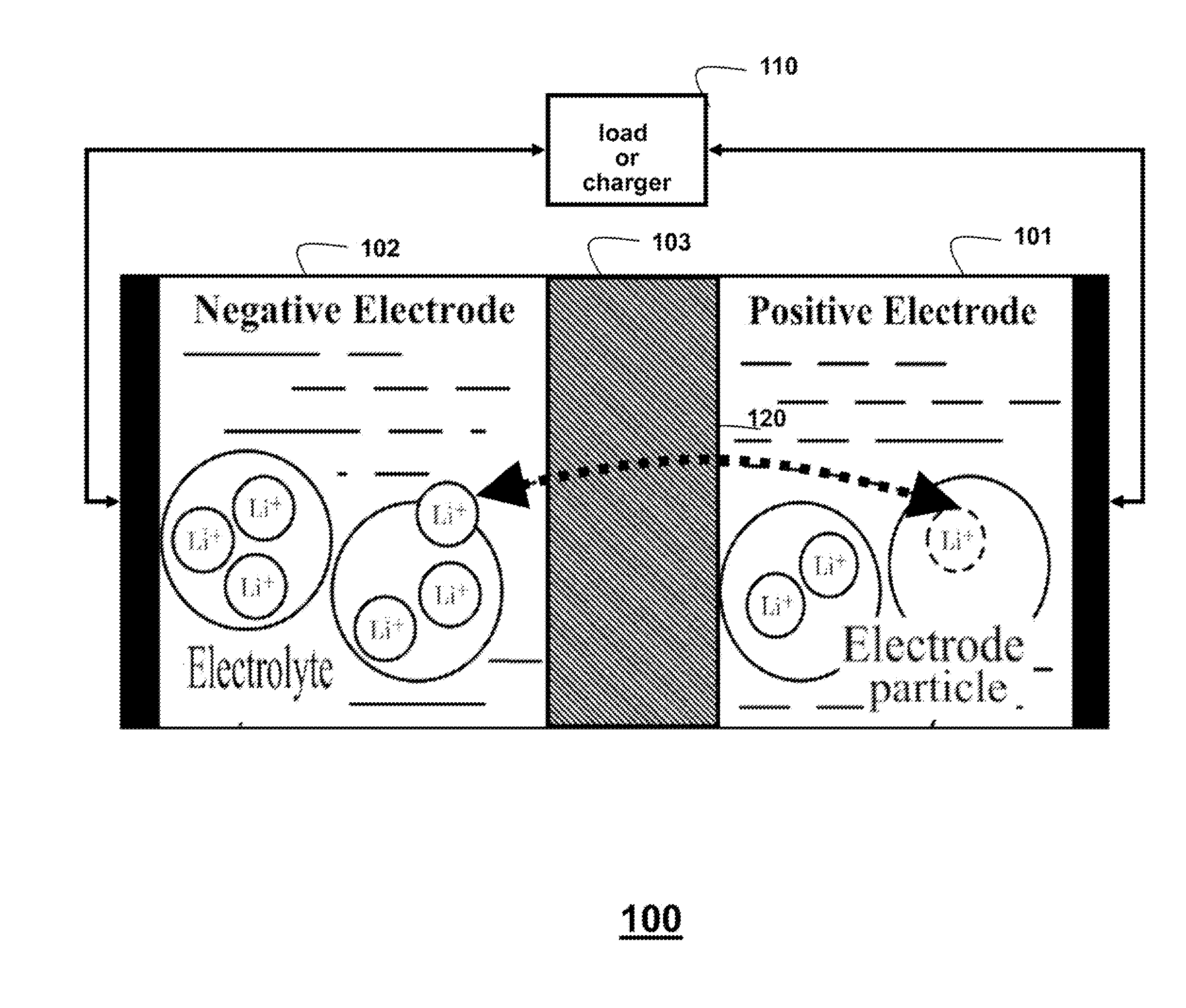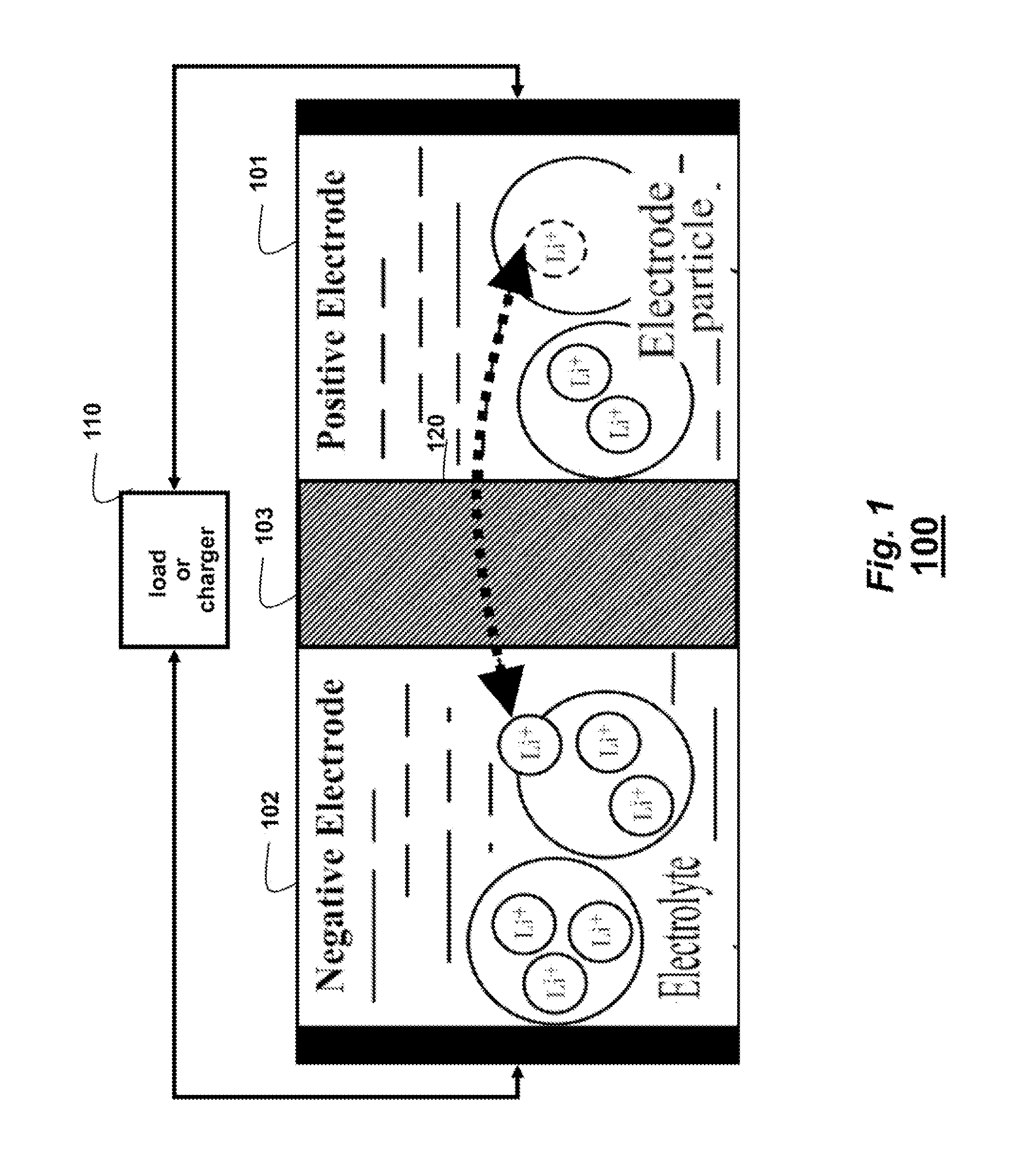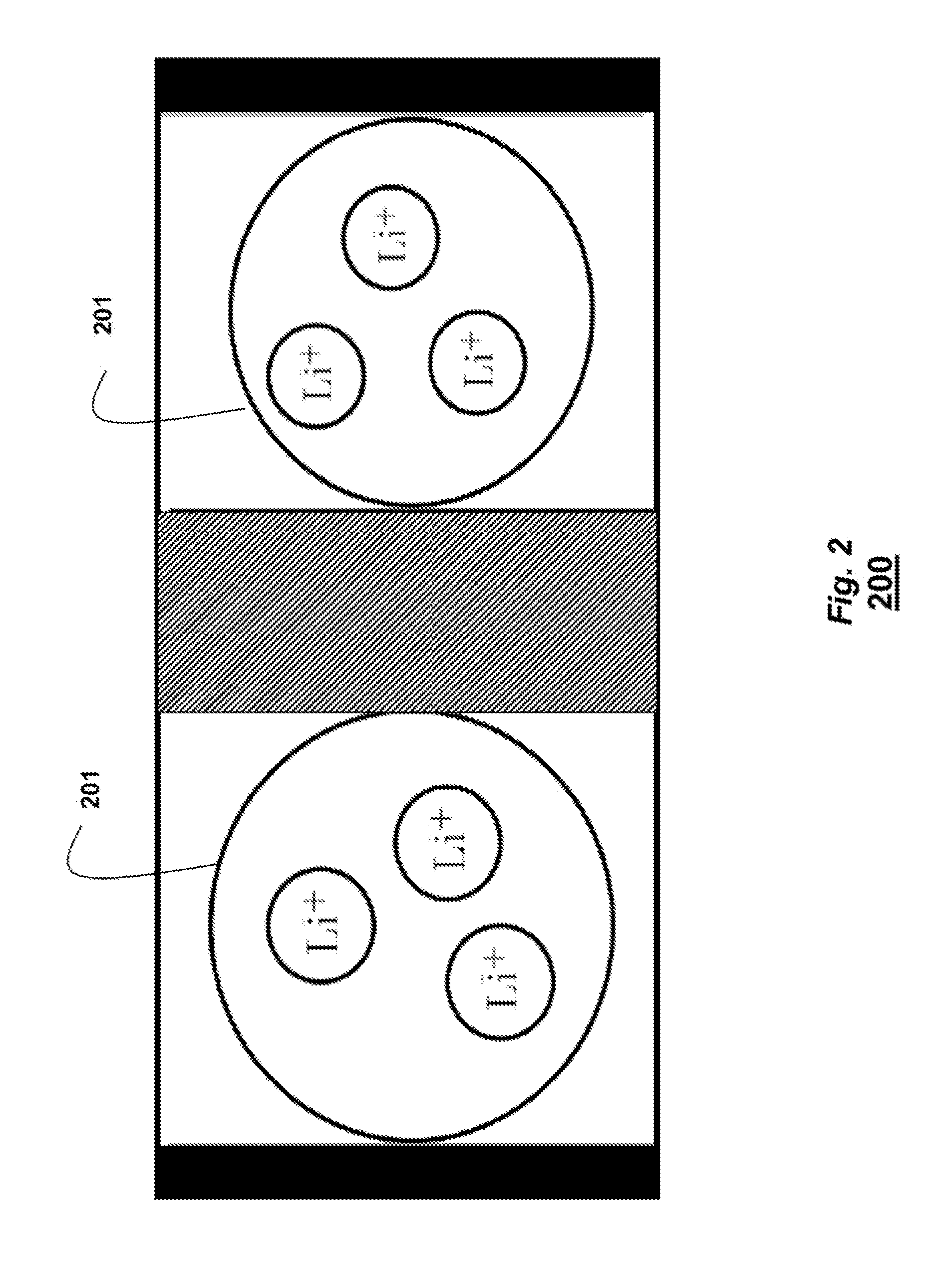Method for Estimating State of Charge for Lithium-Ion Batteries
a lithium-ion battery and state estimation technology, applied in the field of lithium-ion batteries, can solve the problems of difficult analysis of performance, impracticality of estimation for many applications, drift of coulomb counting, etc., and achieve the effect of ensuring stability of estimation error
- Summary
- Abstract
- Description
- Claims
- Application Information
AI Technical Summary
Benefits of technology
Problems solved by technology
Method used
Image
Examples
Embodiment Construction
Battery Model
[0019]FIG. 1 shows a schematic of a lithium-ion (Li+) battery 100 that can use embodiments of the invention. A positive electrode 101 is e.g., a metal oxide, a polyanion, or spinel. Small solid particles of the compounds are compressed to provide a porous structure. A negative carbon electrode 102, which usually contains graphite particles, is also porous. The interstitial pores at both electrodes provide intercalation space, where the Li+ ions can be stored. The non-aqueouse electrolyte contains free ions and is electrically conductive. A separator 103 is arranged between the electrodes. The separator enables the exchange of Li+ ions from one side to the other, without passing electrons. Thus, electrons must either flow through a load or charger 110.
[0020]When the battery is charging, the Li+ ions are extracted 120 from the particles at the positive electrode into the electrolyte, driven by a reaction at a solid particle-electrolyte interface, and the particles at the ...
PUM
 Login to View More
Login to View More Abstract
Description
Claims
Application Information
 Login to View More
Login to View More - R&D
- Intellectual Property
- Life Sciences
- Materials
- Tech Scout
- Unparalleled Data Quality
- Higher Quality Content
- 60% Fewer Hallucinations
Browse by: Latest US Patents, China's latest patents, Technical Efficacy Thesaurus, Application Domain, Technology Topic, Popular Technical Reports.
© 2025 PatSnap. All rights reserved.Legal|Privacy policy|Modern Slavery Act Transparency Statement|Sitemap|About US| Contact US: help@patsnap.com



